I caught up with the cop car in the peak-hour nonsense without even trying, the Hypermotard easily scything through traffic. I’d literally just picked up the latest model from Ducati HQ but within seconds had the measure of its superb low-speed balance despite feeling like I was sitting on top of the headstock, compared to the rather more laid-back Scrambler I’d just given back.
Deciding discretion was the better part of valour I kept pace with the boys in blue rather than give them any excuse to have a chat by leaving them in my dust. In the ebb and flow of traffic we traded position fore and aft on the three-lane road for a few minutes and, as I was slowing for a red light with Mr. Plod directly to my left, he pulled directly into me without so much as a shoulder check or token indicator.
Without conscious thought the agile chassis of the Duke allowed me to spring to the right like a cat chasing a laser-pointer, my knee scraping the car’s mirror as I instinctively grabbed a handful of gas (thank god the anti-wheelie was on, or things could have gone much worse for my license). Feeling fully justified I turned in the saddle and showed Porky the rude finger without even taking the time to evaluate the consequences such a gesture might elicit. Seeing the error of his actions he did, at least, have the good grace to look sheepish, raising an apologetic hand rather than turning on the light-up roof-rack.
Figuring he owed me one, I lane-split over the horizon in a flurry of unnecessary revs and gear changes, shaking my head in as condescending a fashion as I could muster. And given the amount of time you spend looking for blue lights in the surprisingly effective mirrors on this bike anyway, the whole situation struck me as rather ironic.
Designed by Pierre Terblanche, the original 1100 Hypermotard was first introduced as a concept at EICMA in 2005. Voted the most Beautiful Bike in Show, it sent the global Ducati website into meltdown as motorcycle fans all over the world dialled-up to get a butcher’s hook. Since then the Hypermotard has appeared in four further iterations, having got smaller (796), bigger (821), bigger again (939, but really a 937) and finally the same size, but with bigger numbers on the side panels (950, but really still a 937). Got all that?
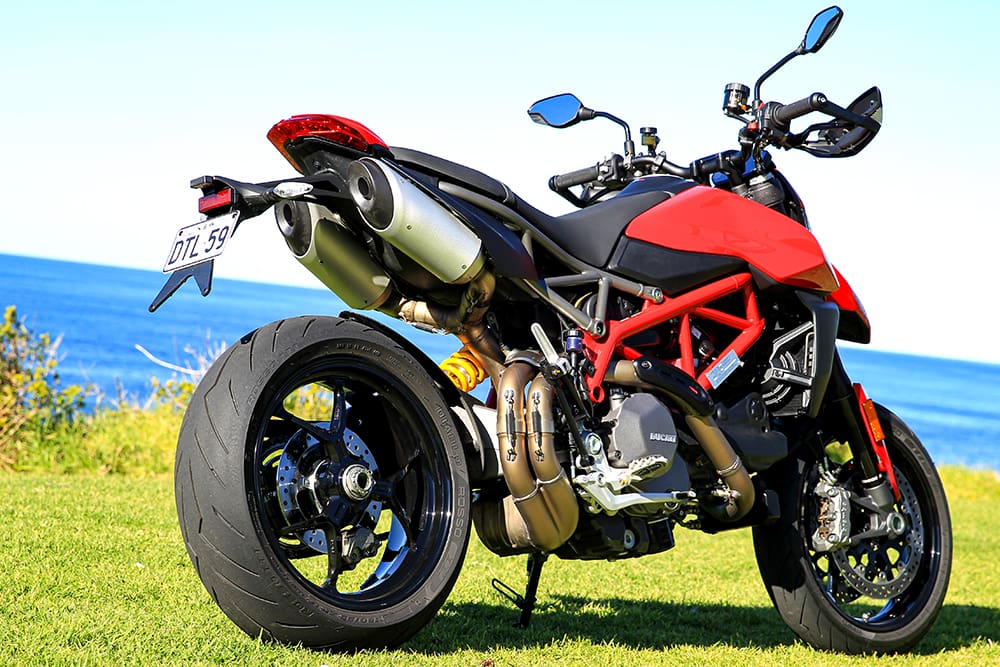
Not that this is just a slight revision over the outgoing, and rather short-lived, two-year-old 939. This is practically an entirely new build and yet jumps right back to that original 1100 for some of its major styling cues. The bodywork is now stripped right back exposing a slim, trellis subframe for one thing, and the under-seat pipes make a welcome re-appearance for another.
Over four kilos has been shaved off the previous claimed kerb weight, although a litre-and-a-half less 98RON accounts for some of that. The main frame has also had a Jenny Craig-ing, with slimmer diameter tubing, as has the motor, wheels, forks and a host of other smaller components. Despite a lofty and unchanged seat height of 870mm, it’s now much easier to get both feet to the ground, courtesy of the frame and seat being much narrower right where you sit. This has resulted in a 53mm reduction in what Ducati clunkily calls your inner leg curve measurement.
Even though it shares the same capacity as the old model, the engine has had a proper working over. Of course it’s still that glorious 11-degree Testastretta L-twin, but it now makes four more horses and the higher peak torque of 96Nm occurs at slightly lower revs than before. However, those numbers alone don’t tell the whole story. The torque curve is now so fat in the mid-range you can probably see it from space, with 80 percent available at a ludicrously low 3000rpm (bear in mind this thing redlines at 10,500rpm).
What’s more, with a new engine management unit, the throttle response is very direct indeed, a blip of the wrist creating an instantaneous bark from the twin pipes. What this means when you get up it in first and second gear away from the lights is, well, that brings me nicely to the engine modes and rider aids, in particular the wheelie control.
The entire electronics package on the 950 has had a huge overhaul, the core of which is a bang up-to-date, 6-axis Bosch IMU controlling ABS, TC and the aforementioned wheelie control, all of which have pre-set base values depending on which of the three modes you select from Sport, Touring or Urban, as you might expect.
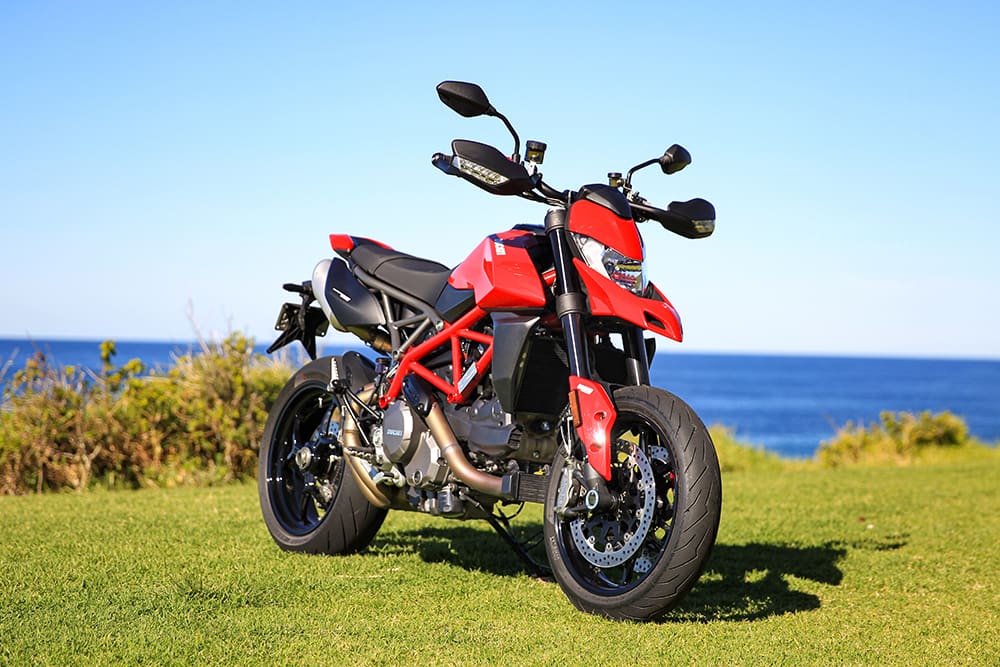
This system is at once both incredibly sophisticated and yet simplicity itself to adjust and tailor to your own requirements via the new TFT dash from the V4 Panigale parts bin. Everything is accessible from just two switches on the left switch block: one up-and-down button to spin through to the desired menu and then a push of the indicator switch to access and confirm any changes. I managed to set the bike up in the way I wanted without once looking at the manual, which is definitely something you can’t say about every bike with a system as feature packed as this one.
To make it even easier, the available parameters are shown highlighted on wire-frame drawings of the bike itself, accompanied by words such as Performance, Stable, Smooth or Dynamic, pertinent to whatever you’re adjusting. This is also borrowed from the V4 user-interface and couldn’t be easier to get your head around.
Something else I first came across on the Panigale is the Slide-by-Brake function, which might as well be called the Most-Fun-You-Can-Have-With-Your-Pants-On function. This allows the rear of the bike to yaw by up to 10-degrees using the back brake before the ABS steps in to bring it all back in line. Sounds fun; is fun.
However, there’s still a bit of technique required and it’s certainly not just a case of steaming into a corner and mashing the pedal. The main thing required is to unweight the rear tyre by getting hard on the front brakes, and the amount of suspension travel helps here, as there’s a lot of forward weight transfer when you jump on the butch and powerful Brembo Monoblocs.
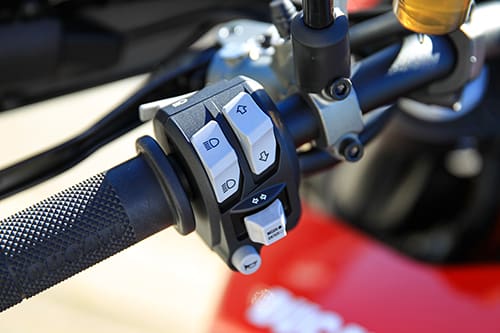
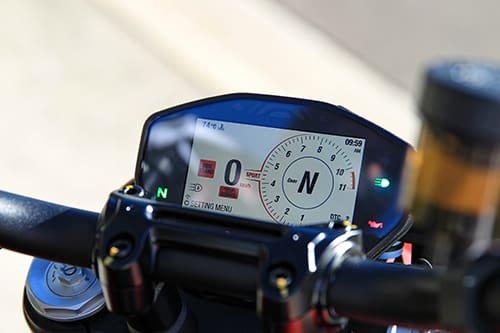
Once the rear is light, using a surprising amount of right foot pressure will get the tyre chirping and, in conjunction with some lean angle, allow the back to slide out. At least that’s the theory.
There’s plenty of ways to get this wrong but at the very least, there’s little chance of lowsiding as you practice – and at best, you might look like a hero. If you’re already a master of this technique, sadly the new electronics will likely frustrate you, as there’s no way to disable the ABS entirely and when it does chime in, it’s quite abrupt. I’d suggest that, for those new to it, this feature is a good way to learn the art of the rear wheel drift with some margin of safety, but is potentially limiting if you’re already good at it. A bloody hoot all the same.
So we’ve got wheelies and skids covered, what’s it like when we’re not trying to get arrested? Well the handling is superb and in the twisties this thing is a joy to ride with high corner speeds and big lean angles. The ground clearance is slated as 44-degrees but it feels way more than that, maybe because of the seat height. Either way it was never a limiting factor on the road, although my toe-sliders might not agree, but I suspect it might be more of an issue on track. The fully adjustable suspension, which initially felt quite stiff, is surprisingly compliant around town and soaks up pretty much everything you’d want it to, yet when the going gets quicker, is fully able to control the chassis through fast changes of direction on the way in and when hard on the power at the exit. It’s certainly possible to get the back end moving about when on the edge of the tyre with that monster mid-range but it never gets out of hand or threatens to turn into anything more serious.
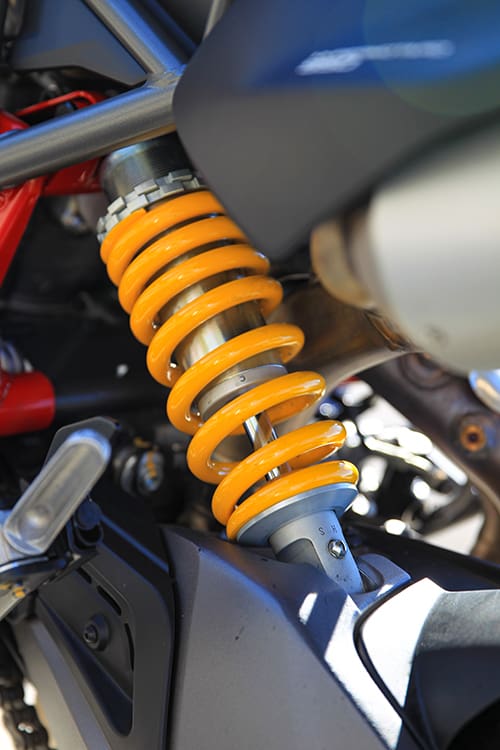
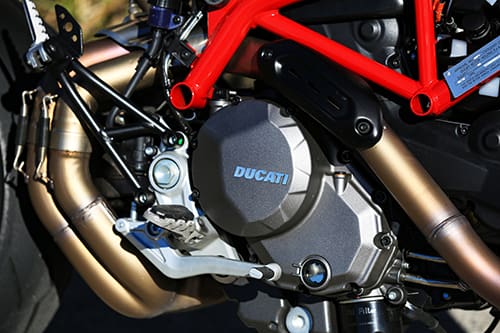
This bike is an urban warrior, but it does have more strings in its bow. With only 14.5L of fuel on board you’d imagine the range would be quite limiting, but even when being ruthless on the throttle, I still managed to get nearly 190km out of it before the fuel light came on, with maybe another 40km to go before calling an Uber. On the freeway expect more from a tank, but less from your backside. After a couple of tank fulls of straight-line miles, my buttocks hoisted the white flag of surrender and I was done with it. As ever, once I hit the twisties everything was fine, but you can’t always elect to go the twisty way.
In addition, with the almost total lack of bodywork up front to deflect the breeze you do get a bit battered at highway speeds although the hand guards do contribute some amount of wind protection: sadly not enough to keep any feeling in my fingers after two hours riding on a seven-degree morning.
While I’m whinging: having said how great the dash controls are, if you leave the trip meter displayed I guarantee you’ll be constantly resetting it to zero when using the indicators. Not a major problem, but as there’s no fuel gauge it’s nice to know if you’re getting close to needing a refill: perhaps more of an issue if you’re navigating by mileage off the beaten track. On the plus side there’s a USB charger under the seat so you never need miss a selfie and, if you spec the bike with the multimedia system, you can Bluetooth your phone to the bike to make and receive calls and texts as well as listen to music, if that’s your thing.
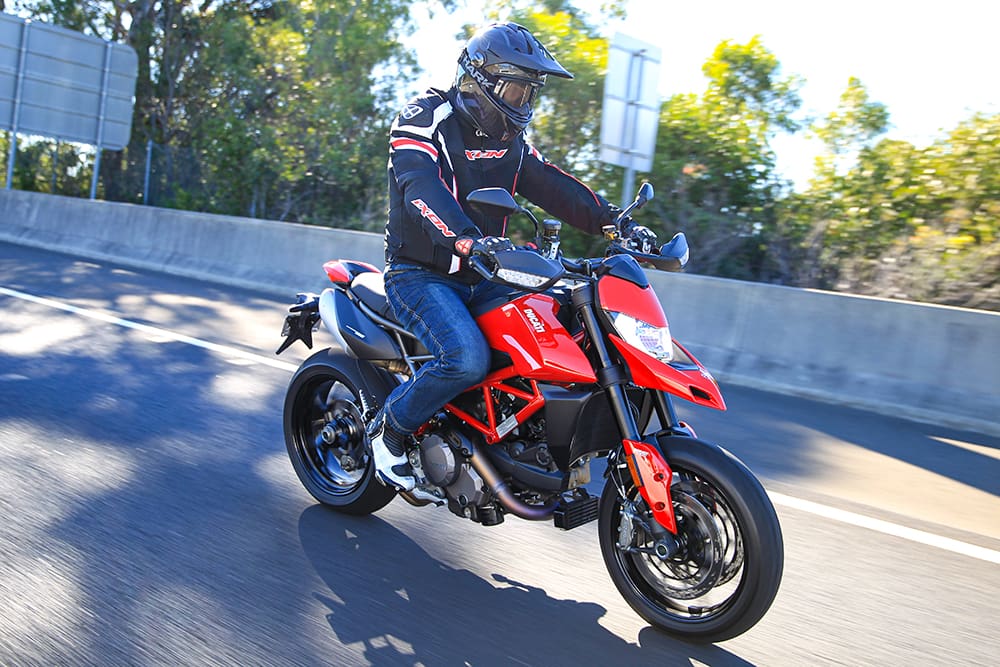
Riding the Hypermotard is about as good for your soul as any bike has a right to be, although possibly worse for your wallet and licence. It’s devilishly hard to act like a grown up and responsible member of society on this thing as it makes being a stunt monkey just too easy.
Not only does it egg you on to epic levels of naughtiness, but makes you feel invincible while doing so. If you were the baddie in a Hollywood blockbuster you’d be riding one of these in the chase sequence and sometimes that’s what it feels like, even though you’ve just popped to the shops for a flavoured milk.
It makes every ride to work a frantic, adrenaline-charged experience (as if that wasn’t already the best part of the day) and can definitely hold its own against sportier opposition on a Sunday. I just might not choose to do a lap of Australia on it.
At $21,200 ride away, you certainly get a lot of sophistication for the money and the amount of fun it delivers makes the entry fee seem well worth it.
Finally, as if your Spidey Senses aren’t tingling enough already, when you pull away something in the engine makes a noise like a very distant police siren as if predicting the future or, in my case, suffering the consequences of my past.

Test NIGEL CROWLEY Photography ZANE DOBIE











